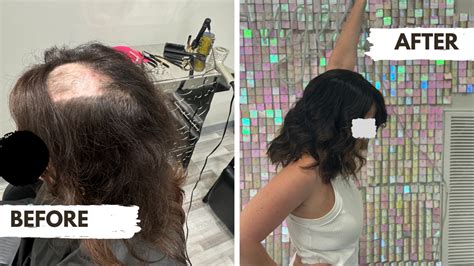Alopecia, a condition characterized by hair loss, can significantly impact one’s confidence and self-esteem. Wigs offer an effective solution, providing a natural-looking and comfortable way to manage hair loss.

Types of Wigs for Alopecia
1. Human Hair Wigs
Crafted from natural human hair, these wigs offer an authentic and realistic appearance. They allow for versatile styling and can be dyed or bleached to match your desired color.
2. Synthetic Hair Wigs
Made from artificial fibers, synthetic hair wigs are generally more affordable than human hair wigs. They come in a wide range of colors and styles, making them suitable for various preferences.
3. Lace Front Wigs
Lace front wigs mimic the natural hairline by incorporating a delicate lace strip along the front of the wig. This allows for flexible styling and a seamless blend with your skin, creating the illusion of natural hair growth.
Choosing the Right Wig
1. Color and Texture
Match the wig’s color and texture to your natural hair as closely as possible. Consider your skin tone, eye color, and desired style when making your selection.
2. Cap Size and Fit
Measure your head circumference to determine the appropriate cap size. The wig should fit snugly without being too tight or loose, ensuring both comfort and a secure fit.
3. Hair Density
The hair density refers to the thickness and fullness of the wig. Choose a density that complements your natural hair volume. Higher density wigs provide more coverage, while lower density wigs offer a more natural and airy appearance.
Benefits of Wigs for Alopecia
1. Restored Confidence
Wigs can significantly enhance self-confidence by providing individuals with the ability to regain their desired appearance. They offer a quick and easy way to cover up hair loss and improve overall well-being.
2. Improved Quality of Life
Alopecia can have a profound impact on social interactions and daily activities. Wigs empower individuals to confidently participate in social events and pursue personal goals without feeling self-conscious about their hair loss.
3. Scalp Protection
Wigs act as a protective barrier for the scalp, shielding it from sun damage, pollution, and other environmental factors that can further aggravate hair loss. They also provide a comfortable cushion, alleviating irritation and discomfort associated with scalp sensitivity.
Choosing a Reputable Wig Supplier
1. Online Retailers
Numerous reputable online retailers offer a wide selection of wigs, providing convenient access to various styles and brands. Conduct thorough research, read customer reviews, and check the company’s reputation before making a purchase.
2. Local Wig Shops
Visiting a local wig shop allows for personalized guidance and professional consultations. Certified wig specialists can assess your needs, measure your head, and recommend suitable wig options based on your preferences.
3. Medical Device Suppliers
Some medical device suppliers specialize in wigs and other hair loss solutions. They typically offer high-quality wigs designed for comfort and durability, covered by insurance in certain cases.
Caring for Your Wig
1. Washing
Wash your wig regularly using gentle shampoo and conditioner. Avoid using hot water or harsh chemicals. Gently pat dry with a towel and allow it to air dry on a wig stand.
2. Styling
Use heat-safe tools cautiously when styling synthetic hair wigs. Human hair wigs can be styled using regular hair styling products, but avoid excessive heat to prevent damage.
3. Storage
When not in use, store your wig on a wig stand or in a breathable storage bag in a cool, dry place. Avoid exposing it to direct sunlight or extreme temperatures.
Tips and Tricks
- Experiment with different styles. Wigs offer a unique opportunity to explore various hairstyles and lengths without damaging your natural hair.
- Consider your occasion. Choose a wig that complements the occasion, whether it’s a casual outing, a formal event, or a costume party.
- Accessorize your wig. Add scarves, hats, or headbands to enhance your style and securely hold your wig in place.
- Seek professional help. If you’re struggling to choose or maintain your wig, consult with a certified wig specialist or hair stylist for guidance.
Frequently Asked Questions
1. How often should I replace my wig?
The lifespan of a wig varies depending on the material, frequency of use, and care. Human hair wigs last longer, up to several years, while synthetic hair wigs typically last for a few months to a year.
2. What causes hair loss?
Alopecia can result from various factors, including genetics, autoimmune disorders, hormonal imbalances, and certain medical treatments like chemotherapy.
3. Are wigs covered by insurance?
In some cases, wigs may be covered by insurance as a medical expense if hair loss is caused by a medical condition. Consult your insurance provider to determine eligibility.
Conclusion
Wigs offer individuals with alopecia a transformative solution to regain their confidence, improve their quality of life, and protect their scalp. With careful consideration of the available options, guidance from reputable suppliers, and proper care, individuals can find the perfect wig to complement their unique needs and style. Remember, embracing your true self, regardless of hair loss, empowers you to live a vibrant and fulfilling life.
